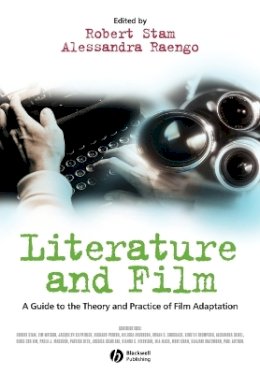
Stock image for illustration purposes only - book cover, edition or condition may vary.
Literature and Film
Robert Stam
€ 46.13
FREE Delivery in Ireland
Description for Literature and Film
Paperback. Literature and Film is a cornucopia of vibrant essays that chart the history and confluence of literature and film. It explores in detail a wide and international spectrum of novels and adaptations, bringing together the very latest scholarship in the field. Editor(s): Stam, Robert; Raengo, Alessandra. Num Pages: 376 pages, 1. BIC Classification: APFA; DSB. Category: (P) Professional & Vocational. Dimension: 244 x 174 x 26. Weight in Grams: 640.
Literature and Film is a cornucopia of vibrant essays that chart the history and confluence of literature and film. It explores in detail a wide and international spectrum of novels and adaptations, bringing together the very latest scholarship in the field.
Literature and Film is a cornucopia of vibrant essays that chart the history and confluence of literature and film. It explores in detail a wide and international spectrum of novels and adaptations, bringing together the very latest scholarship in the field.
Product Details
Format
Paperback
Publication date
2004
Publisher
John Wiley and Sons Ltd United Kingdom
Number of pages
376
Condition
New
Number of Pages
384
Place of Publication
Hoboken, United Kingdom
ISBN
9780631230557
SKU
V9780631230557
Shipping Time
Usually ships in 7 to 11 working days
Ref
99-50
About Robert Stam
Robert Stam is University Professor at New York University. His many books include Film Theory: An Introduction (Blackwell, 2000), Unthinking Eurocentrism: Multiculturalism and the Media (with Ella Shohat, 1994), and Subversive Pleasures: Bakhtin, Cultural Criticism and Film (1989). With Toby Miller, he is the editor of Film and Theory (Blackwell, 2000) and The Blackwell Companion to Film Theory (2000). ... Read more
Reviews for Literature and Film
“Stam and Raengo's Literature and Film offers a wonderful collection of approaches to the multifaceted and sometimes contradictory relationship between the written word and the filmic image, bringing into the discussion a refreshing series of examples drawn from international and minority cinemas.” Richard Pea, Columbia University
.png)